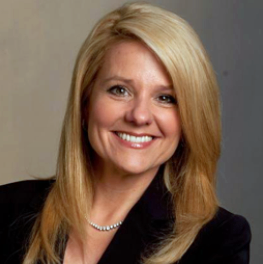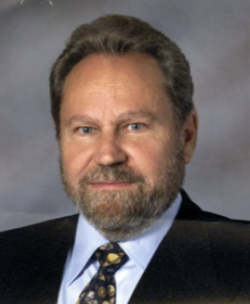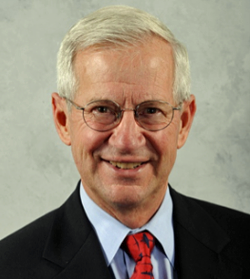
The Space & Satellite Professionals International (SSPI) on March 13 will induct three new members into the prestigious Space & Satellite Hall of Fame.

The 2018 honorees are Gwynne Shotwell, President and COO of SpaceX; Terry Hart, former astronaut, Loral Skynet CEO and now Professor of Practice in Mechanical Engineering at Lehigh University; and Otto Hoernig Jr., a pioneer in government SATCOM, smallsats and, as founder of Spacelink International, the application of commercial satellite capacity for the US military.
They will join the leaders who created, sustained and expanded the industry over the past 60 years, including Dr. Arthur C. Clarke, Dr. Harold Rosen, Rene Anselmo, Takuya Yoshida, David Thompson, Mary Cotton, Romain Bausch, Pradman Kaul, Sidney Topol, John Celli, Giuliano Berretta, Mark Dankberg, James Monroe III, Peter Jackson and Jean-Yves Le Gall.
"The Space & Satellite Hall of Fame honors the achievement of individuals," said SSPI executive director Robert Bell, "but it is also a mirror that reflects where the industry has been and where it is going. We are honoring a NASA astronaut who became a corporate leader in an earlier time of transition in the industry, and a former military officer who was instrumental in creating the military market for commercial capacity. We will induct the operational leader of a launch company that is breaking records every year and helping to drive a new wave of entrepreneurial energy across the industry."
The latest members of the Space & Satellite Hall of Fame will be inducted during the 2018 Hall of Fame Celebration ceremony on March 13, the opening night of the SATELLITE 2018 convention and exhibition. The celebration will take place at the National Air & Space Museum in Washington, DC. The inductees were selected by SSPI’s Board of Directors under the leadership of Chair Dawn Harms, Vice President of Marketing & Sales, The Boeing Company, and President David Myers, President & CEO, DataPath.
The Space & Satellite Hall of Fame recognizes the invaluable contributions of the visionaries who transform life on planet Earth for the better through space and satellite technology. Members of the Hall of Fame are recognized pioneers in communications, aerospace, scientific research, or the development and delivery of space and satellite applications for business, institutions and government.
The 2018 Satellite Hall of Fame Inductees:
Gwynne Shotwell
President and COO, SpaceX

In 2002, Gwynne Shotwell went to work for a new company called SpaceX as vice president of business development. After a brief meeting with founder Elon Musk, he called to encourage her to apply for the job. She was immediately hired – and began a partnership that took the company from an ambitious concept to a company valued at more than $20 billion that is revolutionizing the launch business. As VP of business development, she led the effort to build the Falcon vehicle manifest to over 50 launches representing $5 billion in revenue including commercial resupply services for delivery of cargo and supplies to the International Space Station. She became President and Chief Operating Officer in 2008, and assumed responsibility for day-to-day operations and for managing the customer and strategic relationships that support company growth. Under her leadership, SpaceX's backlog has grown to more than $7 billion worth of launches while achieving a set of remarkable milestones including...
- The first private company to successfully launch, orbit and recover a spacecraft, to send a spacecraft to the International Space Station, and to send a satellite into GEO orbit
- The first landing of an orbital rocket's first stage on land and on an ocean platform
- The first relaunch and landing of a used orbital rocket
- The first controlled flyback and recovery of a payload fairing
- The first reflight of a commercial cargo spacecraft
Gwynne was born in Libertyville, Illinois. She came to SpaceX after more than ten years at the Aerospace Corporation, where she held positions in space systems engineering and project management, and worked on conceptual small spacecraft design, space shuttle integration and reentry vehicle operational risks. Inspired to actually help put spacecraft together, she became director of Microcosm, a low-cost rocket builder. There she also honed the skills in business development and sales that would have such an impact on SpaceX. Gwynne has served on the California Space Authority Board of Directors and as an officer of the AIAA Space Systems Technical Committee. She is a strong proponent of STEM education and has led the fundraising committee of the Frank J. Redd Student Scholarship Competition in raising more than $350,000 in scholarship funding in six years.
Terry Hart
Professor of Practice in Mechanical Engineering, Lehigh University

From F-106 jet fighters and the Space Shuttle to the executive suite, Terry Hart has piloted one of the most remarkable careers in space and satellite. A native of Pittsburgh, Pennsylvania, he won undergraduate and graduate degrees in mechanical and electrical engineering while on active duty with the Air Force Reserve and working on the technical staff of Bell Telephone Laboratories. At Bell Labs, he designed electronic power equipment, led development of the first certified, multi-level secure version of UNIX, and was responsible for the engineering and operations of AT&T's Telstar satellite fleet. Terry was selected as an astronaut candidate by NASA in 1978. After serving as CAPCOM in Mission Control for multiple Shuttle flights, he flew as a mission specialist on STS 41-C. During the mission, the crew successfully deployed the Long Duration Exposure Facility and retrieved the Solar Maximum scientific satellite. They achieved the first repair of a satellite aboard the Shuttle and replaced it in orbit using the Shuttle's remote manipulator arm.
Returning to the private sector, he became supervisor of the information systems engineering department at Bell Labs and was then named president of Loral Skynet, operator of the Telestar fleet. From 1997 to 2002, the company achieved revenue growth of 50% per year despite the bankruptcy of its parent company, Loral Space and Communications. He retired from Loral Skynet in 2014 as the company sold its North American satellites to Intelsat and transferred its international spacecraft to Telesat, another Loral subsidiary. His devotion to the engineering of space and satellite technology continued after his retirement. He became Professor of Practice in Mechanical Engineering in the P.C. Rossin College of Engineering & Applied Science at Lehigh University. In addition to his teaching schedule, he directs research in spacecraft attitude determination and trajectory optimization, and the NASA Hopper Spacecraft Simulator project.
Otto Hoernig, Jr.
Founder, Spacelink International

In a career spanning military service and entrepreneurship, Otto Hoernig has been a pioneering innovator in satellite communications and space based technologies. In his early career, he was Chief of Scout Launch Operations at VAFB launching NASA, International Consortium and special mission DoD satellites including the Transit Navigational Satellites, predecessor to GPS. He was a significant contributor in the development and launch of Government agency and DoD satellites, including AFSATCOM and MILSTAR. In the Department of Defense he was recognized as the top military satellite engineer, called on by the Secretary of Defense for advice on global and national satellite requirements.
After his retirement from the US Air Force as a Lieutenant Colonel, Hoernig began his second career with the American Satellite Company. As vice president of space systems for ASC, he managed the process of deploying ASC's communications satellite system which featured the first encrypted / protected satellite command link. His responsibilities included satellite and control center design and development, selection of launch vehicles, scheduling launches at Cape Canaveral and acceptance of the on-orbit spacecraft. Otto was the designated ASC Payload Specialist aboard Space Shuttle STS-71 to help orbit ASC-2 and Skynet 4B, scheduled for launch in January 1987. One year earlier, however, the explosion of the Challenger caused the mission to be cancelled. Otto testified before Congress on the urgent need to resume NASA's partnership with industry, which helped speed the return of the Shuttle to commercial operations.
When Contel acquired ASC, he became vice president for defense communication and networks for its Federal systems division, where he managed a $100 million line of business providing services to the Department of Defense and other agencies. He left Contel to become CEO of International Microspace long before smallsats became mainstream. IMS focused on exploiting new technologies to downsize space systems and reduce costs. The company was sold after Otto led the acquisition of a major contract. Otto also negotiated the purchase of Telesat's Anik D2 and its transfer to Arabsat, where it became Arabsat D1.
Then in 1994, Otto seized the opportunity created by rising conflict in the Balkans and Middle East to found Spacelink International. Spacelink provided the DoD with essential commercial satellite communications services. The company specialized in supporting US and coalition warfighters. At that time, the idea of using commercial satellite capacity for military operations was new, and Spacelink became the first private company to operate an extension of the Defense Information Systems Network. To meet the fast-growing need of the deployed warfighter, the company won international carrier licenses in European countries, becoming one of the first private satellite service providers in Germany.
In 2001, Spacelink along with two other companies won the largest small-business contract ever to be awarded in the history of the DoD to provide comprehensive commercial satellite communications in support of the US Government. As a technologist and entrepreneur, Otto greatly expanded the opportunities available to the satellite business in service to the nation.
Otto has an engineering degree from Texas A&M, and a management degree from USC.

